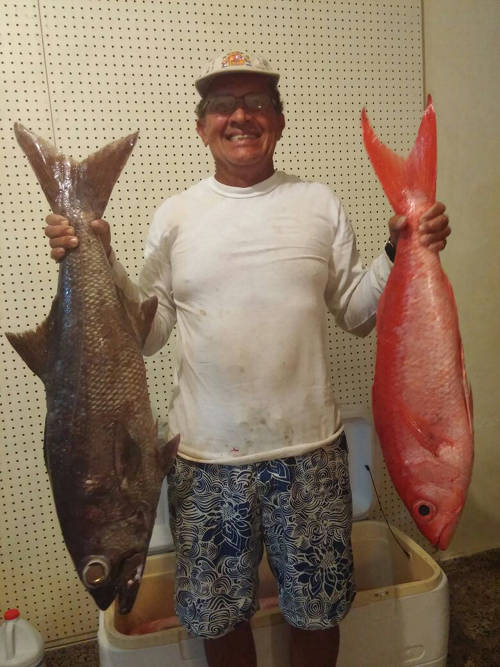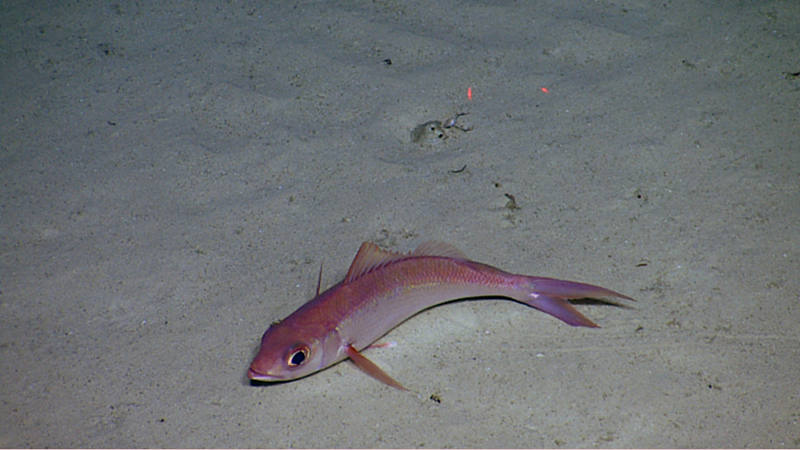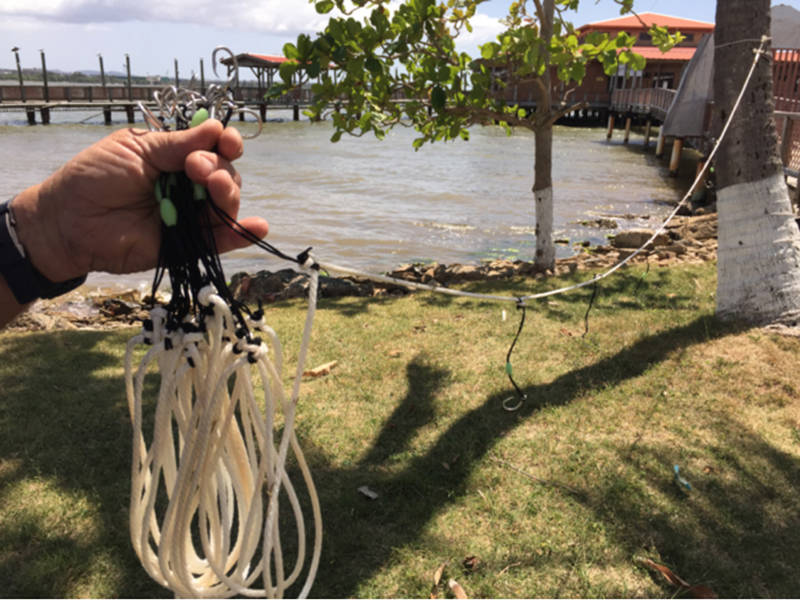
By Michelle Schärer-Umpierre - University of Puerto Rico Mayagüez
Andrea Quattrini - U.S. Geological Survey Southeast Ecological Science Center
Graciela García-Moliner - Caribbean Fishery Management Council
The snapper-grouper complex consists of several fishes from at least 10 families (including snappers, groupers, grunts, porgies, tilefish) that are fished both commercially and recreationally throughout the Caribbean. Most species in this complex are generally found in shallow seas, often associated with coral, rocky, and artificial reefs. However, there are several species that can occur in deeper (greater than 200 meters or 100 fathoms) waters, yet we do not know the full extent of their depth ranges and their local distributions. Thus, we have an incomplete picture of population dynamics (i.e., quantity and location of fish of a particular age and how this changes over space and time) for several species.
Similar to shallow-water species, members of the deepwater snapper-grouper complex are often found in rugged, rocky habitats. These habitats are often colonized by a diversity of deepwater corals. Deepwater corals can live at depths up to 6,000 meters (3,280 fathoms) for 100s to 1,000s of years, and exhibit low recruitment (the process of adding new individuals to a population through immigration and/or reproduction). Deepwater corals can thus be highly susceptible to damage, and may take decades to recover from human-caused disturbances.
With fishing activities progressively expanding into deeper waters, it is critical to gather data on deepwater fish populations to identify essential fish habitats. Essential fish habitats include areas where fish spawn, breed, feed, and/or grow to maturity. Collected data will help to effectively manage fisheries and protect benthic habitat, including deepwater corals. This is particularly necessary as both corals and fishes have a suite of life history characteristics (or certain biological and ecological traits) that make them vulnerable to damage and/or overexploitation.
This group of deepwater fishes is composed of a diversity of species with unique life history aspects that make them difficult to study and may increase their vulnerability. For example, groupers grow very slowly, take many years to become sexually mature, and change sex after a given size. Additionally, some groupers are female until they change into a male later on in life, with males often controlling harems of females.
Snappers and groupers generally require distinct critical habitats to complete their life cycle. Many of these species are pelagic spawners that aggregate in groups of hundreds to thousands to release sperm and eggs into the water column. Larvae hatch from fertilized eggs and are transported by oceanic currents, until it is time for recruitment on the seafloor.
Knowledge on the distribution of critical habitats (for spawning and nursery function) is importantl to develop adequate ecosystem-based fishery management.

Mr. L Román holding a catch of (on left) Atlantic Scombrops (Scombrops oculatus) and (on right) Cartucho (Etelis oculatus). Image courtesy of L. Román. Download larger version (jpg, 325 KB).
The snapper-grouper complex is managed by various United States Fishery Councils throughout the western Atlantic, including the Caribbean Fishery Management Council .
In the Caribbean, snappers and groupers are managed as separate fishery management units. Management includes annual catch limits for the commercial and recreational sectors and a bag limit for the recreational fishers.
It is very important for management to know the spatial distribution of deepwater snappers and groupers, particularly since these species occur both in the state waters (to nine nautical miles offshore in Puerto Rico and to three nautical miles offshore in the U.S. Virgin Islands) and in the U.S. Exclusive Economic Zone (EEZ, three or nine to 200 nautical miles). Regulations, however, only apply in the EEZ.
Several species from the families Lutjanidae (snappers) and Serranidae (sea basses) can occur to depths up to 500 meters (250 fathoms), but these species may also occur deeper on seamounts and along the shelf-break zones of the insular slope. One species in particular, the queen snapper (locally referred to as ‘cartucho’) Etelis oculatus, is fished commercially with vertical long lines in deep waters off the insular platforms of Puerto Rico and the U.S. Virgin Islands.

Queen Snapper resting on the seafloor at 439 m on Dog Seamount in the Caribbean. Image courtesy of the Ocean Exploration Trust and U.S. Geological Survey. Download larger version (jpg, 429 KB).
The queen snapper reaches a maximum size of 100 centimeters (40 inches!!!) in total length and up to 17 kilograms (37.5 pounds), although it is most commonly captured at 64 centimeters total length (25 inches!).
Queen snappers are top predators of rocky benthic habitats. This species is of particular interest from an ecological and management perspective as it is a valuable species and a component of a targeted deep-water fishery throughout the Caribbean. However, population sizes and the extent of the depth distribution for this species are not completely understood.
During Océano Profundo 2015: Exploring Puerto Rico’s Seamounts, Trenches, and Troughs, we will visit locations that are near active fishing grounds for this species.

Vertical long line used in western Puerto Rico to capture deep-water snappers and groupers. Image courtesy of M. Schärer Download larger version (jpg, 479 KB).
This expedition is of special interest to commercial fishers. In areas we will be exploring, we may not only find queen snappers, but also other edible fishes that are not currently harvested. Guayanilla Canyon and the Mona Passage are of special interest: both for the fish that might be found and for the environment these fish inhabit. Commercial fishers want to know where deepwater corals and sponges are located because they try to avoid areas where currents can cause gear to become entangled with these sessile species. Losing gear at these depths is very costly!